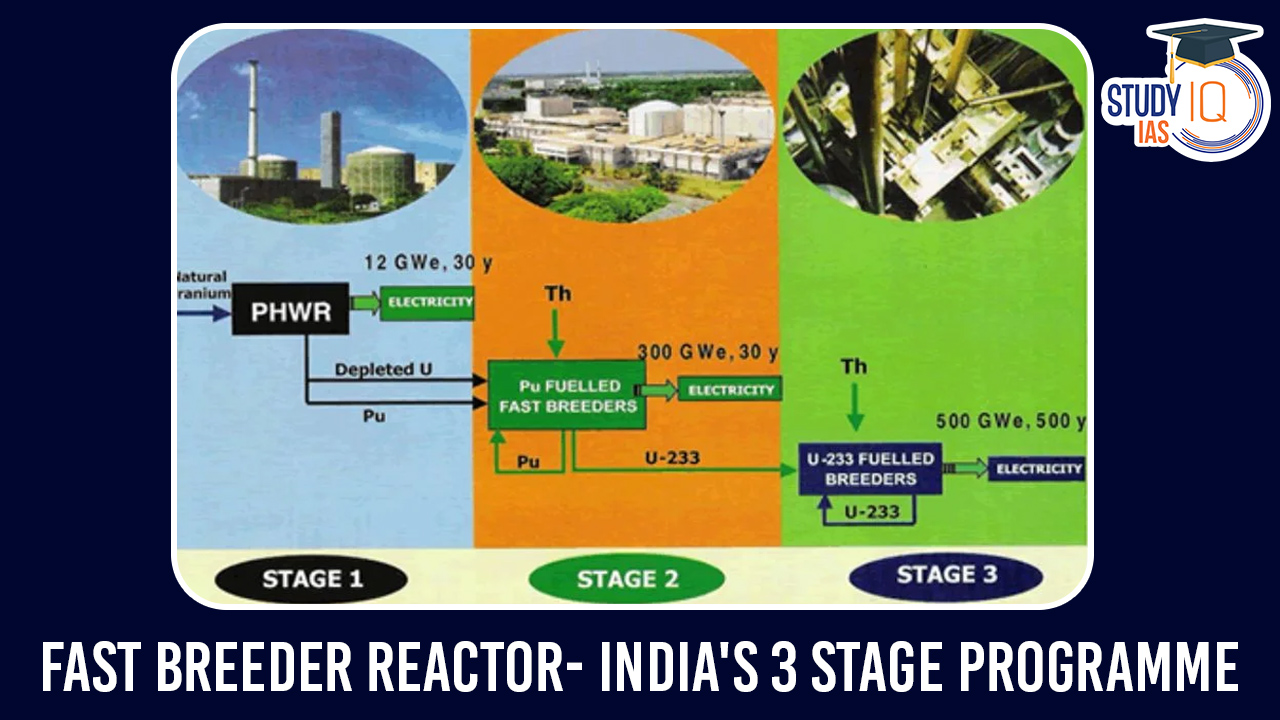Table of Contents
Context: India’s nuclear programme has reached a significant milestone with the commencement of core loading at the country’s first indigenous Fast Breeder Reactor (FBR) in Kalpakkam, Tamil Nadu.
Fast Breeder Reactor: Historical Context and Development
- Fast Breeder Reactor Program: Initiated two decades ago, the FBR program aims to extend India’s capabilities across the nuclear fuel cycle, contributing to electricity production from uranium.
- BHAVINI Establishment: In 2003, under Prime Minister Atal Bihari Vajpayee, Bharatiya Nabhikiya Vidyut Nigam Ltd (BHAVINI) was formed to construct and operate the Prototype Fast Breeder Reactor (PFBR).
- Project Delays: Originally targeted for completion by September 2010, the PFBR faced delays due to technological challenges, with the last set of approvals moving the completion to October 2022.
- Global Context: Upon commissioning, India will join Russia as the second country to have a commercial operating FBR. China has a smaller fast breeder program, while Japan, France, and the United States have ceased theirs due to safety concerns.
We’re now on WhatsApp. Click to Join
Three-Stage Nuclear Power Programme
- Stage One: Involves Pressurised Heavy Water Reactors (PHWRs) using natural uranium as fuel, with 22 operational reactors having an installed capacity of 6,780 MWe.
- Stage Two: Focuses on FBRs to multiply fissile material inventory, critical for utilising thorium in the future.
- Stage Three: Envisions using thorium in an Advanced Heavy Water Reactor (AHWR) to produce electricity through the ThU233 cycle.
Thorium Utilisation and Energy Security
- Thorium Reserves: India’s strategy includes leveraging its abundant thorium reserves found in coastal and inland sands across various states for long-term energy security.
- Closed Fuel Cycle Approach: Involves reprocessing spent fuel to separate useful isotopes, facilitating the transition towards thorium usage.
Progress and Future Directions
- Initial Fuel Use: The FBR will initially use Uranium-Plutonium Mixed Oxide (MOX) fuel, with plans to incorporate thorium (Th232) as a blanket for producing fissile U233 in later stages.
- Energy Production and Costs: Despite advanced technology, the projected capital and electricity costs of the FBR are comparable to other nuclear and conventional power sources.
- Nuclear Power Expansion: With the India-US civil nuclear deal enabling uranium imports, India aims to significantly increase its nuclear power output to 22,400 MWe by 2032.


 World Day for International Justice 2025...
World Day for International Justice 2025...
 Anusandhan National Research Foundation ...
Anusandhan National Research Foundation ...
 Places in News for UPSC 2025 for Prelims...
Places in News for UPSC 2025 for Prelims...





















